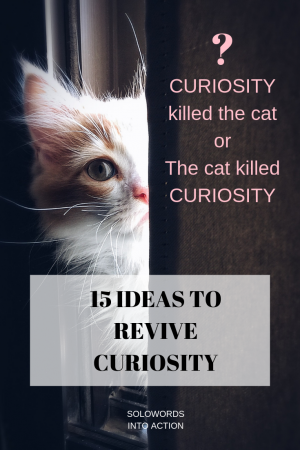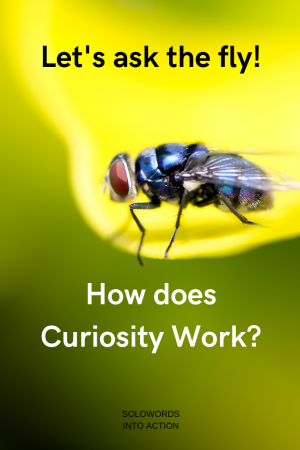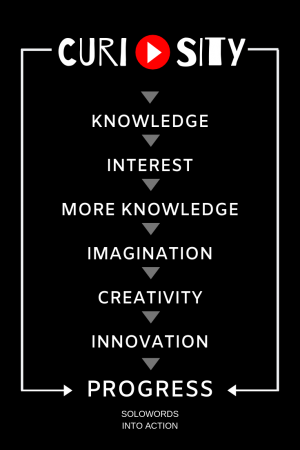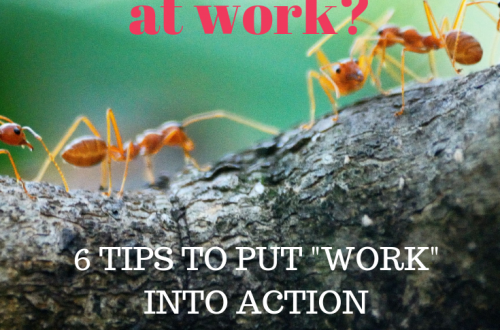
The Cat Killed Curiosity: 15 Ideas to Revive Curiosity
“The cat killed curiosity.” Really? Isn’t the real phrase “Curiosity killed the cat”? Yes, that is right. We usually hear that phrase from our moms and grandmas to warn us of the consequences or danger to know more of what we should know. After reading and reflecting a lot about curiosity, I started to wonder if, in today’s world, it makes more sense to say that “The cat killed curiosity,” understanding that the cat is each of us. Could it be possible that we are killing curiosity?
What is curiosity?
By Cambridge Dictionary Curiosity is:
“An eager desire to know or learn about something.”
By Macmillan Dictionary Curiosity is:
“A strong feeling of wanting to find out about something.”
Let’s remember when we were little kids and used to ask a lot of questions. I remember once asking who named all the things we know, and why those people put those names and not other names? It is interesting that as we get older, we reduce the number of questions we ask significantly. I see it more clearly with my kids, who used to ask questions about everything, sometimes to the point to drive me crazy. Now, just like most of us, they do not take the time to question or wonder in the same way.
All this made me think if we are putting away or killing our instinct of curiosity or wonder. But why? I decided to put the word “curiosity” into action and did some research.
Why are we killing curiosity?
- We have been educated with the phrase “Curiosity killed the Cat.” This phrase teaches us to be careful with curiosity. It presents curiosity as something dangerous that we need to use with caution.
- In our society, asking a lot of questions can be seen as annoying. Even, sometimes people who ask a lot can be considered dumb, making us shy or even afraid to ask something
- We are so busy that we don’t want to waste time asking questions and even worse, listening to long answers. We want fast answers and to the point
- Thanks to technology, we have an ocean of information at our fingertips. We are used to believing everything we find on the internet and do not question if what we are reading is entirely funded. (so please, don’t believe everything I say).
- We sometimes discourage others from making questions directly or through our body language. How many times do our kids come to us with questions and we dismiss them without answers? Even worst, when we don’t know the answer, why we don’t get curious and try to find it?
- We are so distracted by social media that we have lowered our capacity of observation of what is happening around us. Observation can lead us to curiosity and vice-versa
- We are so busy and tired in this fast pace life that we have become kind of lazy about overthinking.
Are curiosity and interest the same thing?
Yes and no. Some psychologists define curiosity as:
“Closing a knowledge gap about something specific. We are curious about why the sky is blue and after we find the answer, our curiosity is satisfied.”
Interest relates more to search for a lot of information. We found out why the sky is blue but want to know more about it, so we start researching because we are interested in the topic.
In the end, both words look for knowledge, but curiosity can be satisfied with just an answer, and then it can become an interest that will make us dig for more information.
In my opinion, curiosity is a feeling that comes before we put our full interest in something.
How does curiosity work?

Let me show you the process by sharing something I got curious about recently.
I hate flies. During a hot summer, blow flies are my nightmare. They always enter into my super clean house every time someone opens the door, and I go completely crazy. I always joke with my kids and tell them that if they want to kill me, they need to put me inside a room full of flies.
The other day, when a fly got inside, I got curious and wondered why they like to come inside the house if outside they can find what they are looking for. My husband said because they were looking for light. I didn’t agree with that answer because out there was more light than inside, so I told him I thought they were looking for some cold air. He laughed about my idea of the flies getting too hot and sweaty and getting inside the house to enjoy the cold air from the air conditioning. At that moment, I laughted too, then I got very curious and did some research.
So, how did “curiosity” work in this case?
- Something got my attention: the flies getting inside my home
- I felt curious
- I asked myself the question: Why do flies like to go inside my house?
- Then, I asked someone to see if I could find an answer, but I was not satisfied with that answer
- I decided to ask someone who knows everything: “Mr. Google” and closed the knowledge gap. If you want to put the word “curiosity” into action right now, you can find the answer to my “why” question here.
- I could keep being curious from the answers I got to the point to be interested and dig deeper for more information.
- Depending on my level of interest, I can get creative and try to find a solution to my problem.
Why is it important to be curious?
I imagine curiosity like a button that when we push it, starts the process of something extremely important; the process that can lead us to progress. How?

Let me explain better:
- Curiosity leads to knowledge
- Knowledge can create interest to learn more
- More knowledge can lead to more curiosity which can put our imagination to work
- Imagination fuels creativity
- Creativity produces innovation
- Innovation leads to progress
So if we don’t cultivate curiosity, are we killing the process that leads to progress? I would say yes. For this reason, we should work every day to put the word “curiosity” into action.
15 ideas to revive our curiosity?
- Think about what we would like to learn
- Be a good observer. Observation can make us wonder about things
- Always ask questions. Don’t be shy or afraid. Make it a habit to ask why and let’s encourage our children to do the same
- Try to ask open questions that get us full answers, not just yes or no
- Don’t procrastinate curiosity. If we have a question about something, let’s ask right away and try to get the answer as soon as possible. We can’t let our curiosity vanish away
- Don’t stop if you can’t find an answer right away. Keep looking. Keep asking
- Play the why game and don’t feel comfortable with just one answer. Try to find different opinions or information from various sources.
- After we get an answer, let’s ask ourselves how that could be different
- Get answers from people first. The answers we obtain from interacting with people will be different than those from Google. Answers from people will carry experiences, opinions, emotions, and give us the chance to interact.
- Read more. Reading increases curiosity because it fills us with information we didn’t have before. This new information can promote our instinct of wonder.
- Let’s do things that are new to us. i.e., visit new places, meet new people, try new food, learn something new, be more adventurous. Usually, new things provoke curiosity. You can read my post about Say YES to an Adventurous Life
- Get curious about the people we know or meet. Ask them: What do they do? Why do they do it? How did they start? What was the most challenging?
- Pay attention to what is going on around us, and listen with interest. Awareness is a great way to spark curiosity. You can read my post about Awareness is the Key to Everything
- If someone asks a question, be receptive and encourage them to ask more. If we don’t know the answer, let’s get curious and try to find it.
- Read books, blogs or watch videos about curious things. For example: visit curiosity.com or watch videos from VSauce website or Youtube Channel about “weird and wonderful things” to give us a start. Some of these videos are great to watch with our kids.
Conclusion:
Curiosity is something we should practice and cultivate in our children and ourselves every day. There is always so much to wonder and learn from anything and everyone. It is through curiosity that we will be able to learn new things, understand people and the world better, imagine, create, innovate, and progress.
We learn the most when we are curious about something and learning is the only way to grow personally and professionally. For this reason, we should always be curious and cultivate curiosity in the people around us. Let’s make sure we are not the cat that kills curiosity, so from now on, let’s remember to put the word “curiosity” into action.
Talking about curiosity, did you know the phrase “Curiosity Killed the Cat” was first used in print in 1898? If you are curious to know where this phrase comes from, you can check this link.
- When was the last time you asked why?
- What was your last why question?
Please share your answers. I am very curious 😉
As always, here is a link to a very interesting TEDx Talk about the power of curiosity.
The Power of Curiosity | Bob Borchers | TEDxAmadorValleyHigh
I will be sharing my curiosity on Instagram and Facebook. I hope they make you curious!
Get this FREE Printable Design to remind yourself to put the word CURIOSITY into action
Easy to download, high resolution image to print at home or favorite local or online print shop in any of the following sizes: 5 x 7, 8 x 10, 11 x 14, 16 x 20 and 18 x 24. To download, click the green bottom bellow.


You May Also Like

How much are we interested to learn? Let’s put learning into action
August 14, 2019
Do you feel recognized at work? 6 tips to put work into action
September 4, 2019
